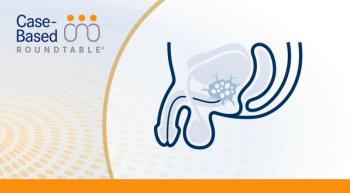
mCSPC: Incorporating Newer Therapies Into Practice
Episodes in this series
Ralph V. Boccia, MD: Today a couple of the more exciting drug classes include the PARP inhibitors. We would be looking at BRCA and other mismatch repair pathways where we might be able to use a PARP inhibitor because some of them are extraordinarily effective. The other is to see whether the patient might have microsatellite instability, might have PD-L1, PD-1 overexpression, so that we could use PD-L1 or PD-1 drugs. The immuno-oncology drugs—we’re now using some of them in up-front studies. Clinical trials are critically important for us to be able to accrue our patients to looking at all the new targets that we have in oncology in general and prostate cancer, urologic oncology specifically.
From a community standpoint, we’re on the front lines. We’re seeing more patients than they are in academic centers. We’re faced with the day-to-day discussions with our patients, finding effective therapies, hopefully preserving quality of life and improving quantity of life. With a patient with metastatic castration-sensitive disease, it’s important to prolong this progression-free survival as long as we can, and that’s progression from PSA [prostate-specific antigen] rise, progression from radiographic progression, progression from organ involvement and preserving quality of life. We still will forever always be using androgen deprivation therapy as a cornerstone and then picking from there what we consider the most effective drugs.
Looking at the drugs, we have several, as I’ve already mentioned. Now that we have options to move our patients onto androgen deprivation therapy. Now it’s critically important to look at the adverse-effect profiles. They are disparate enough that picking the drugs is very important. The 1 I tend to talk to my patients about most, and the 1 that sticks at the back of my mind because of my experience using the drugs that are on the market now, is the fatigue. The fatigue with the class of drugs we’re using today, the androgen receptor blockade, is probably the 1 where it can be the most prominent. What I find is that apalutamide tends to have significantly less fatigue than, for instance, enzalutamide.
My go-to drug has been apalutamide over enzalutamide for that reason. We’re sequencing patients as best we can. We’re looking at genomics as early as we can. We’re starting patients on the best-available therapies as early as we can because preventing progression is preventing resistance, and that’s the reason that progression can be prolonged. When you tend to use drugs with different mechanisms of action—ie, androgen deprivation therapy on the 1 hand and androgen blockade on the other hand—you tend to reduce that chance of developing resistance and improving these patients. You’ve got to look at quality of life when you’re doing all this, because if you administer a drug to any patient with any malignancy and they’re debilitated by it, you haven’t done them any service.
Transcript edited for clarity.
Case: A 66-Year-Old Male with Metastatic Castrate-Sensitive Prostate Cancer
Initial presentation
- A 66-year-old man presented with mild intermitted back pain
- PMH: DM; medically controlled; OTC analgesics for pain
- FH: No known family history of cancer
- PE: DRE revealed an enlarged prostate; otherwise unremarkable
Clinical Workup
- PSA 70 ng/mL
- Core needle biopsy with TRUS showed adenocarcinoma of prostate
- Gleason score (4+4)
- Bone scan revealed 4 spinal lesions (T8/T9, L1/L2) and 1 in the right femur
- Chest/abdominal/pelvic CT scan was negative for distant metastases
- Diagnosis: stage IV mCSPC
- ECOG PS 1
Treatment and Follow-Up
- He was started on ADT + apalutimide 240 mg qDay
- At 2-month follow up: PSA 10 ng/mL
- No new lesions on repeat imaging










































